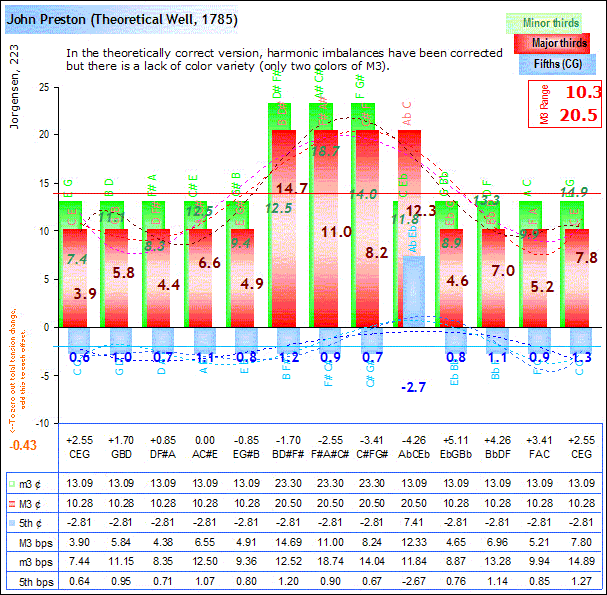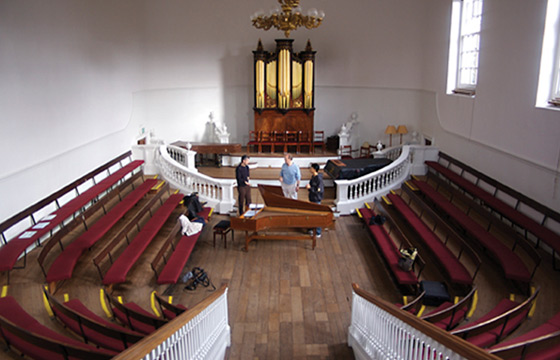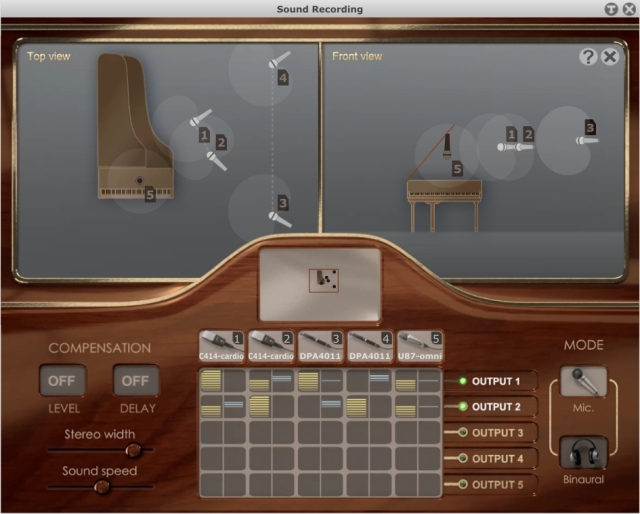_DJ_ wrote: My reference recording (Program Ten - The London Scene, 1794-95) is from Tom Beghin's The Virtual Haydn (see links above for more about Tom's project), and goal is to see how close I can get our Broadwood to sounding like Bilson's Clementi in those recordings. From there I'll work backwards toward integrating what's been gleaned from developing the recorded sound into my odd quad setup (as described here) with the aim of inching ever closer to the holy grail of "the instrument in the room".
i'm curious though about some of your observations...
Yes, I know Tom Beghin's recordings and his project The Virtual Haydn ...
I also read the description of your setup and I understand what you are looking for. However, I don’t think that using reverb (even with subtlety) will allow you to achieve the realism of a ‘‘resonance case’’. Resonance should not be confused with reverberation. These are two very different things.
Your experiment remains interesting, but in your place (if I had the time) I would build myself a soundboard with high quality speakers to fix it to my controller, rather than use speakers by pointing them up. In theory, the problem when you do this is that the sound disperses too much in the air, whereas with a soundboard and a lid, the sound will be more concentrated. This should strengthen the bass, give more body and maybe even add the resonance of a ‘‘case’’.
_DJ_ wrote: most music of this period (along with the instruments that were developed to support it) was written for and performed in salons and small chambers, while Holywell was quite the novelty at the time in its idea of having a "public" & dedicated space for music performance, so how would this be "the most appropriate acoustics for classical music"? what makes for "appropriateness" in this regard anyway??
It’s important to understand that the only original thing at that time was that the Holywell Music Room was one of the few public places dedicated to music, but it was not the only room with similar acoustic characteristics in which chamber music was regularly played.
It must also be considered that what you call small rooms and salons has absolutely nothing comparable to what we call small rooms and salons nowadays.
Of course, there were all types of rooms and salons at the time (from the smallest to the largest), but the private high places of classical music were mostly in castles, villas, etc.
The large Esterhazy Castle concert hall in Austria (translated nowadays as a medium-sized chamber concert hall) is the perfect example, Haydn having worked there for almost 30 years. This is four times larger than the Holywell Music Room with a similar reverberation time.
You may play or record Haydn in any venue if you wish, but chamber music concert halls are specifically designed by architects and acousticians to achieve an optimal reverberation time between 1.6 and 1.8 seconds, for the classical period.
The Holywell Music Room has long been regarded as the ideal room type for chamber music, and if you want to get closer to it, the Dixon Studio Theater can’t be considered as an appropriate choice (although Gilles’s recording sounds pretty good). Indeed, theater acoustics are not intended for chamber music, and their short reverberation time is essentially dedicated to the clarity of spoken word diction.
_DJ_ wrote: to my ear, Holywell is already plenty wet (if not too much so), so what about Haydn makes you want more space?
Too wet, no. It depends on the microphones type and where you place them.
Otherwise, it would mean that you consider the vast majority of Haydn sonatas recordings too wet. I don’t think that's your case.
I did a very long inventory of almost all the available recordings of Bach, Handel, Scarlatti, Haydn and Mozart, from the 40s to the present. So I can tell you where these composers are most often recorded.
_DJ_ wrote: and what then about Mozart or Beethoven?? reverb time between 1.8 & 2.0??? and so does each composer then have their own "sweetspot" of space/reverb in your opinion????j
Of course, no. The subject here is Haydn ... and the ideal reverberation time for Haydn is the same for all composers of the classical period.
In fact, the ideal room acoustics depends more on the genre and the period than the composer (although some concert halls have been designed with specific works in mind as a reference).
Also be aware that there are acoustic standards in each country, for each type of room, and that the choice of reverberation time is not hazardous.
I hope this will help you
Mickael
Last edited by Modelling Audio Prod (03-07-2018 09:06)




